The California Condor
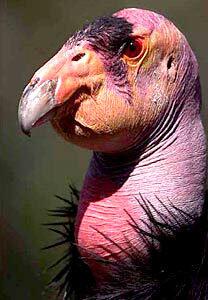
Topa Topa lives at the Los Angeles Zoo’s condor breeding facility, a remote corner of the zoo that is off limits to all but condor staff. (SPENCER WEINER / LAT)
The California condor has been saved from extinction. But a major hurdle remains before the species can live in the wild without help.
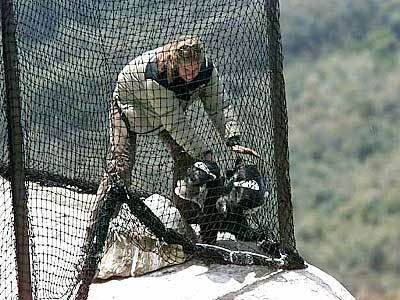
A biologist guides Adult Condor 9, or AC9, toward an opening in his enclosure before releasing him into the wild at the Sespe Condor Sanctuary. (SPENCER WEINER / LAT)
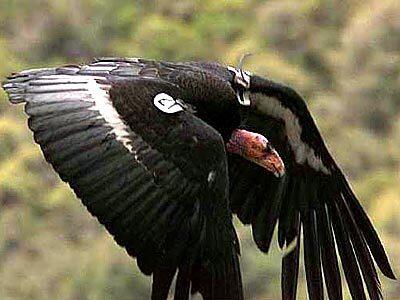
AC9 takes flight over the Sespe Condor Sanctuary in Los Padres National Forest. (SPENCER WEINER / LAT)
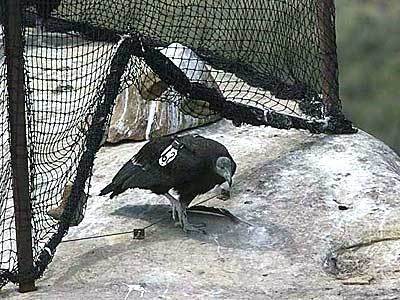
AC262 leaves the Sespe Condor Sanctuary holding pen without assistance. (SPENCER WEINER / LAT)
Advertisement
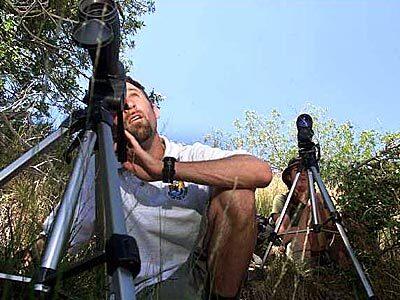
U.S. Fish and Wildlife Service field biologists Mike Barth, left, and Bronwyn Davey observe nesting AC100 and AC108 at the Sespe Condor Sanctuary. (SPENCER WEINER / LAT)
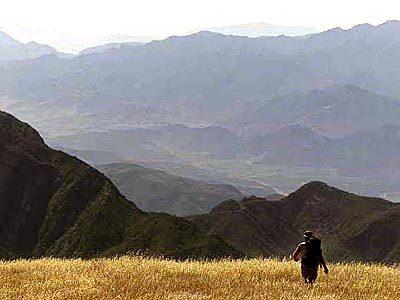
U.S. Fish and Wildlife Service biologist Chris West hikes into Sespe Condor Sanctuary to observe newly hatched condor chicks. (SPENCER WEINER / LAT)
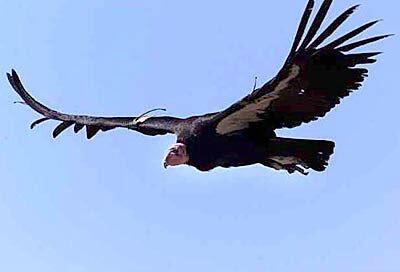
AC98 soars over the Sespe Condor Sanctuary. The California condor weighs up to 25 pounds with wings stretching nearly 10 feet across. (SPENCER WEINER / LAT)
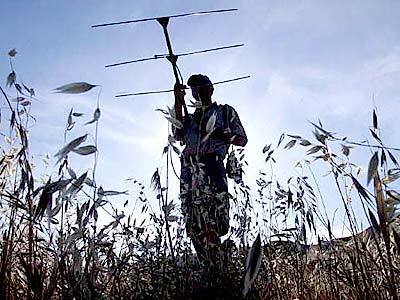
U.S. Fish and Wildlife Service biologist Mike Barth uses a telemetry receiver to track birds at the Sespe Condor Sanctuary. When condors are mature enough, they are fitted with radio transmitters, given a number and released into the wilderness. (SPENCER WEINER / LAT)
Advertisement
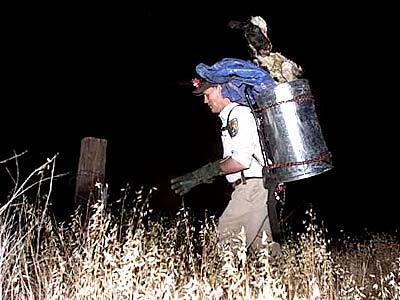
U.S. Fish and Wildlife Service biologist Mark Hill delivers dinner to condors in the Sespe Condor Sanctuary. The food is delivered after dark, so the birds do not associate the food with humans. (SPENCER WEINER / LAT)
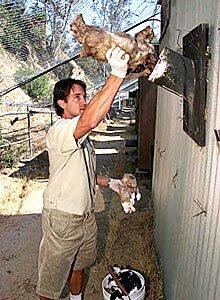
Condor keeper Mike Clark feeds the birds through a hole in their pen at the Los Angeles Zoo. Human contact with the condors is kept to a minimum. (SPENCER WEINER / LAT)
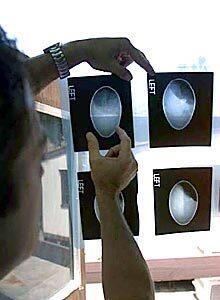
Mike Clark examines X-rays of California condor eggs at the Los Angeles Zoo. Each egg is closely monitored untill it hatches. (SPENCER WEINER / LAT)
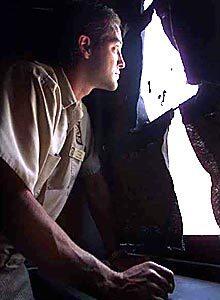
Mike Clark watches a condor from the observation room at the Los Angeles Zoo. (SPENCER WEINER / LAT)
Advertisement
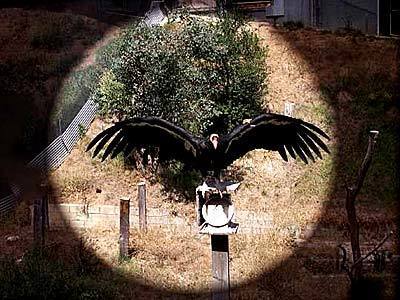
A California condor is viewed through a small opening in the observation room at Los Angeles Zoo. (SPENCER WEINER / LAT)
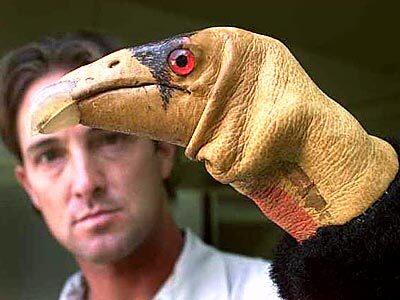
Mike Clark uses a puppet resembling an adult condor to play parent to a newly hatched chick. (SPENCER WEINER / LAT)
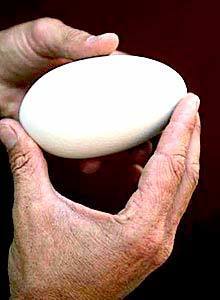
Condor eggs are placed in incubators and adults are given phony eggs like this one to tend. When the eggs are close to hatching, they are returned to the nests so the adults can raise the chicks. (SPENCER WEINER / LAT)



